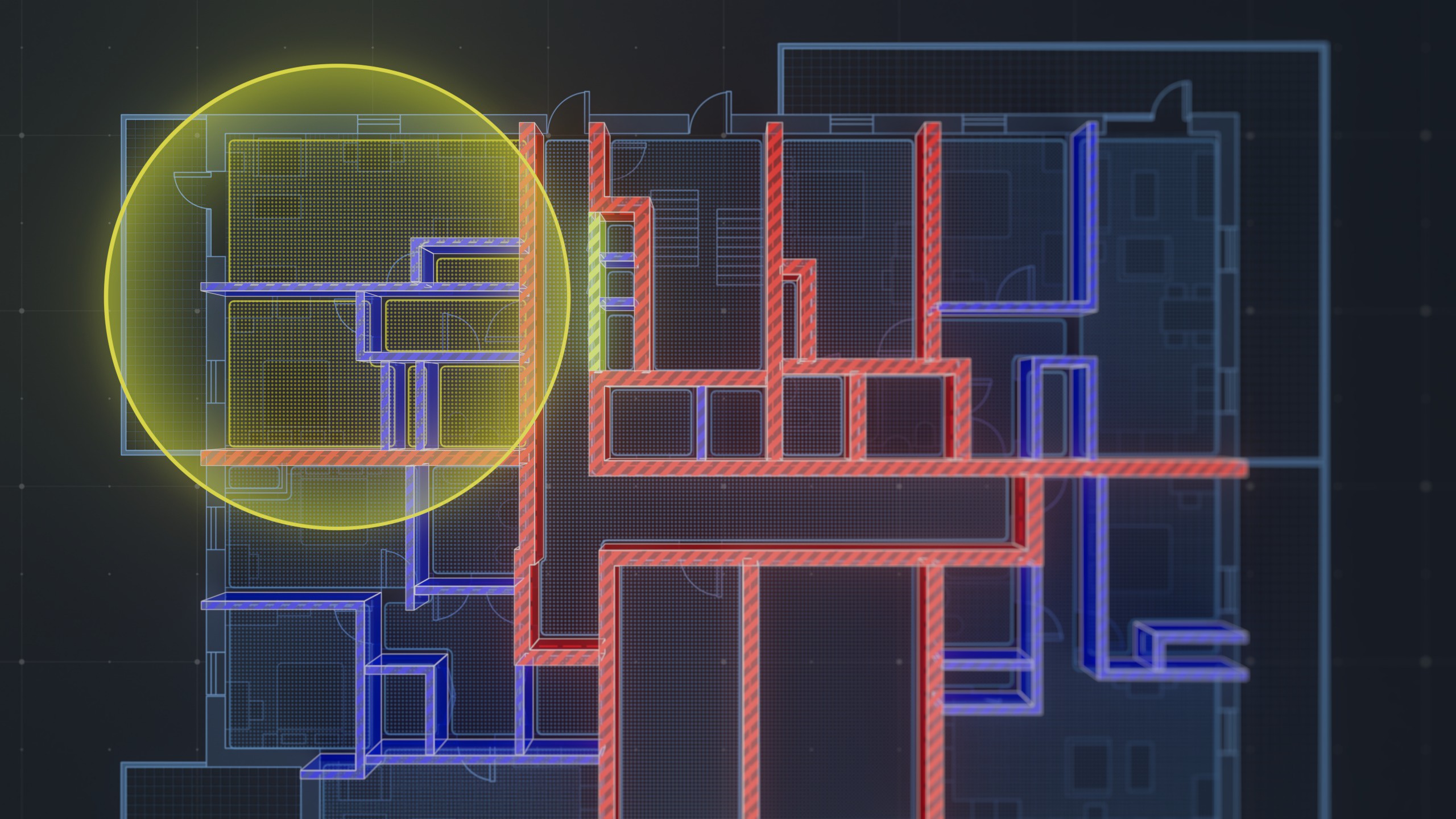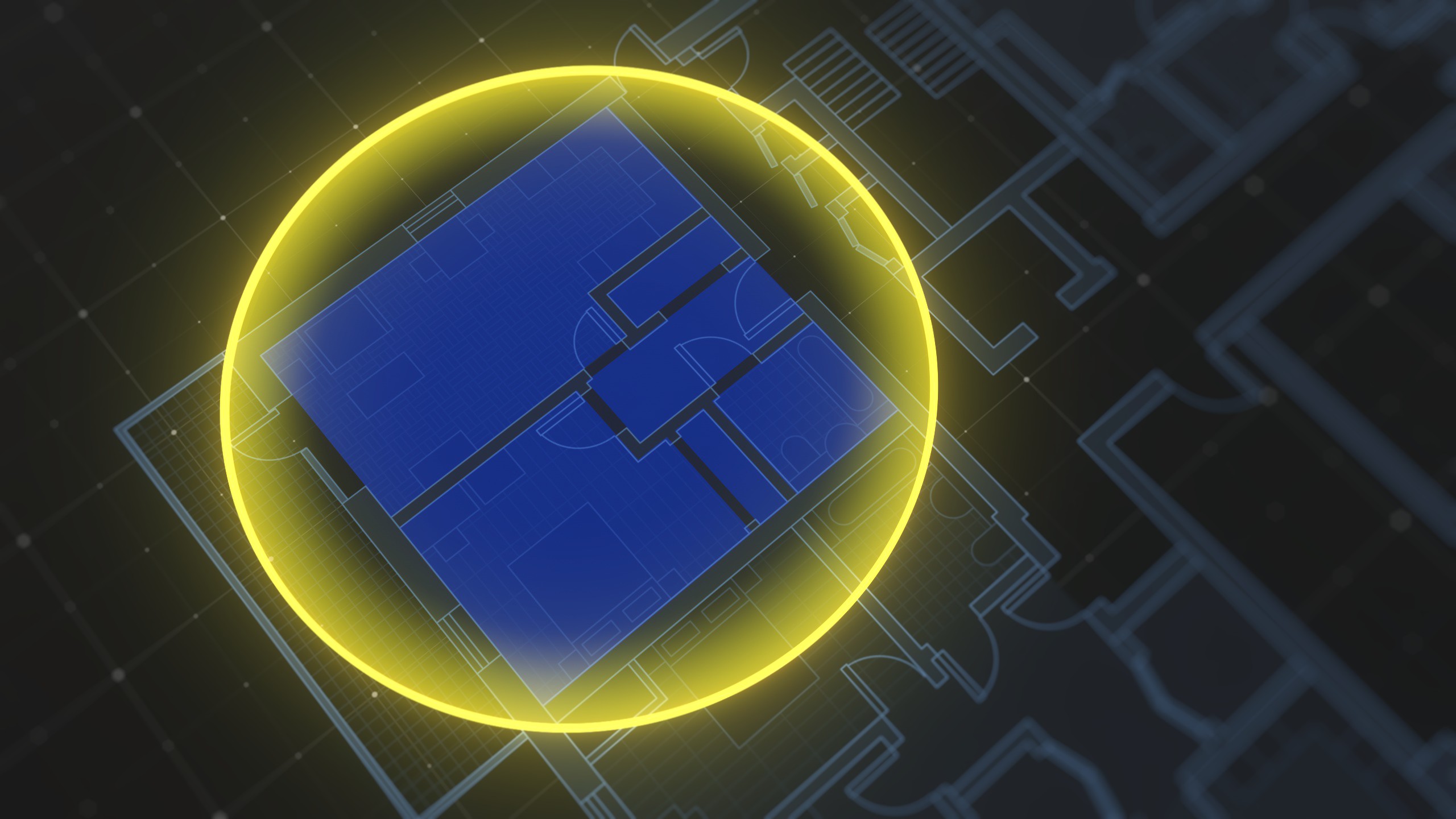This picture (in frame) was created by Midjourney using the image of Kreo support bot together with the search request "Construction Takeoff and Estimating software with AI"
Construction takeoff and estimating software is a type of software that is designed to assist contractors, engineers, and architects with the process of creating cost estimates and material takeoffs for construction projects.
Such software uses digital blueprints and designs to help users quickly and accurately calculate the number of materials needed for a project, as well as the labour and equipment costs associated with the project.
This type of software is especially useful for large-scale construction projects, where the cost of materials and labour can quickly add up and become difficult to manage without a sophisticated software tool. Takeoff and estimating software can help construction professionals save time and money by automating the process of calculating project costs and reducing the risk of errors and inaccuracies.
Importance of AI and Machine Learning in the construction industry
Artificial Intelligence (AI) and Machine Learning (ML) are becoming increasingly important in the construction industry due to their ability to automate and optimize many aspects of the construction process. Here are a few reasons why AI and ML are important in the construction industry:
- Improved Efficiency: AI and Machine Learning can automate many repetitive and time-consuming tasks, allowing construction professionals to focus on more complex and creative aspects of their work. This can lead to significant improvements in productivity and efficiency.
- Increased Accuracy: AI and Machine Learning can analyze large amounts of data and identify patterns that would be difficult for humans to detect. This can lead to more accurate cost estimates, better project scheduling, and an improved level of safety on construction sites.
- Enhanced Safety: AI and Machine Learning can help identify potential safety hazards on construction sites and recommend ways to mitigate them. This can help reduce the risk of accidents and injuries.
- Better Resource Management: AI and Machine Learning can help construction professionals manage their resources more effectively by optimizing schedules, predicting material requirements, and identifying areas where cost savings can be achieved.
Overall, AI and Machine Learning have the potential to revolutionize the construction industry by improving efficiency, accuracy, safety, and resource management. By leveraging these technologies, construction professionals can deliver projects more quickly, more affordably, and with fewer errors.
Understanding AI and Machine Learning
Explanation of AI and ML
AI, or Artificial Intelligence, is the field of computer science that deals with the development of machines and algorithms that can perform tasks that would normally require human intelligence, such as recognizing patterns, making decisions, and solving problems. AI systems are typically designed to learn from data, rather than being programmed with explicit instructions.
Machine learning is a subset of AI that focuses on the development of algorithms that can learn from data and improve over time. Machine learning algorithms can be trained on large datasets and used to make predictions or classifications based on new data. There are several types of machine learning, including supervised learning, unsupervised learning, and reinforcement learning.
Supervised learning involves training a machine learning algorithm on a labelled dataset, where the desired output for each input is already known. The algorithm uses this data to learn how to make predictions on new, unlabelled data.
Unsupervised learning, on the other hand, involves training an algorithm on an unlabelled dataset, where there is no known desired output. The algorithm must then identify patterns and relationships in the data on its own.
Reinforcement learning involves training an algorithm through a process of trial and error. The algorithm receives feedback in the form of rewards or penalties for each action it takes, and uses this feedback to learn how to make better decisions in the future.
AI and Machine Learning are being applied to a wide range of fields, including finance, healthcare, and transportation, as well as the construction industry. They have the potential to significantly improve efficiency, accuracy, and decision-making across many industries.
Differentiating between AI and Machine Learning
AI (Artificial Intelligence)
- A field of computer science that focuses on the development of machines that can perform tasks that would normally require human intelligence
- AI systems can be designed to perform a wide range of tasks, from recognizing speech and images to playing games and making decisions
- AI can be rule-based or data-driven
- AI can be programmed to follow specific rules or instructions
- AI can be used for both supervised and unsupervised learning
- Examples of AI include virtual assistants like Siri and Alexa and self-driving cars
- AI is a broader field that encompasses Machine Learning
Machine Learning
- A subset of AI that focuses on the development of algorithms that can learn from data and improve over time
- Machine Learning algorithms are designed to process data, identify patterns and relationships, and make predictions or classifications based on new data
- Machine Learning is data-driven
- Machine Learning algorithms can be trained on large datasets without being explicitly programmed
- Machine Learning includes supervised learning, unsupervised learning, and reinforcement learning
- Examples of Machine Learning include recommendation engines like those used by Netflix and Amazon, and image recognition software like Google Photos
- Machine Learning is a subset of AI
Note that the lines between AI and Machine Learning can be blurry at times, and the terms are often used interchangeably. However, this table provides a general overview of the key differences between the two concepts.
Benefits of AI and Machine Learning in the construction industry
Here are top 3 benefits of utilising AI and Machine Learning in the construction industry:
- Faster project delivery: by automating tasks and providing insights into project performance, AI and Machine Learning can help speed up project delivery times. This can help construction firms stay competitive and win more business.
- Better project management: AI and Machine Learning help construction firms manage projects more effectively by providing real-time insights into project performance. This can help identify potential issues before they become major problems and allow for proactive decision-making.
- Enhanced quality control: AI and Machine Learning help to improve quality control by identifying potential defects and deviations from project plans. This can help reduce rework and ensure that projects are completed to the highest standards.
Overall, the use of AI and Machine Learning in the construction industry can help improve efficiency, reduce costs, and enhance safety and quality control. By automating tasks and providing real-time insights, construction firms can better manage projects and deliver better outcomes for their clients.
Role of AI and Machine Learning in Construction Takeoff and Estimating Software
Here are some examples of how AI and Machine Learning can be used in construction takeoff and estimating software:
- Automated quantity takeoff: AI and Machine Learning algorithms can be used to automate the process of quantity takeoff. This involves identifying and quantifying different materials needed for a construction project. By analyzing data from project plans and drawings, machine learning algorithms can quickly and accurately identify and quantify materials, reducing the time and effort needed for manual takeoff.
- Predictive cost modelling: Machine Learning algorithms can be used to develop predictive cost models that can estimate the cost of a construction project based on historical data and other factors such as project size, location, and scope. By analyzing data from past projects, machine learning algorithms can identify patterns and relationships that can help predict the cost of future projects with greater accuracy.
- Real-time project monitoring: AI and Machine Learning can be used to monitor job site progress in real-time. By analyzing data from sensors and other sources, machine learning algorithms can provide real-time insights into project performance, allowing construction professionals to make informed decisions and take corrective action as needed.
- Supply chain optimization: AI and Machine Learning can be used to optimize the construction supply chain by identifying the most efficient routes for materials and equipment, as well as predicting demand and optimizing inventory levels. By reducing waste and improving logistics, construction firms can save time and money while improving overall project efficiency.
- Risk management: AI and Machine Learning can be used to identify and mitigate project risks. By analyzing data from past projects and current conditions, machine learning algorithms can help construction professionals identify potential risks and develop strategies to mitigate them.
Kreo AI and Machine Learning Construction Takeoff and Estimating Software
Overview of Kreo Software
Kreo Software is a powerful construction takeoff and estimating software that leverages the latest advancements in artificial intelligence and machine learning spheres. It combines the accuracy of AI-powered measurement tools with collaboration functionality and robust reporting capabilities, all in a cloud-based environment.
With Kreo Software, construction professionals can streamline the estimating process, reduce errors, and improve the accuracy of cost estimates. The software uses machine learning algorithms to automate the process of quantity takeoff, allowing users to quickly and accurately quantify materials and labour needed for a project.
Kreo Software also includes advanced analytics and reporting capabilities that provide real-time insights into project performance, allowing users to identify potential issues and take corrective action as needed. And with its cloud-based architecture, Kreo Software allows for easy collaboration and sharing of project data across multiple users and teams.
Benefits of Kreo Software in the construction industry
- Cloud-based software for construction takeoff and estimating: Kreo Software is a cloud-based solution that allows users to access their project data from anywhere, at any time. This eliminates the need for on-premise software installations and makes collaboration between team members more efficient.
- Bring advanced automation to your workflow: With Kreo Software, construction professionals can leverage the power of AI and Machine Learning to automate time-consuming tasks such as quantity takeoff and cost estimating. This allows users to focus on higher-level tasks and make more informed decisions.
- Powerful reporting tools: Kreo Software includes advanced reporting capabilities that allow users to generate detailed reports on project costs, progress, and performance. This helps construction professionals to identify areas for improvement and make informed decisions.
- Create. Iterate. Repeat: Kreo Software is designed to be flexible and customizable, allowing users to create, iterate, and repeat their project plans as needed. This helps construction professionals to respond to changing project requirements and improve their overall workflow.
Overall, Kreo Software provides construction professionals with a powerful and flexible solution for construction takeoff and estimating. By leveraging the latest advancements in AI and Machine Learning, Kreo Software helps to improve accuracy, reduce errors, and streamline the construction process, resulting in better outcomes for clients and stakeholders.
How Kreo Software utilizes AI and Machine Learning
Auto Measure — gone are the days of manually measuring each element and tediously grouping them together. With Kreo revolutionary AI-powered feature, you can sit back and relax while it does all the work for you. In just a matter of minutes, Auto Measure can accurately identify and classify all the different elements in your drawings, from walls and doors to living rooms and bedrooms.
AI Suggest — the ground-breaking tool from Kreo's ML department, that can accurately predict the measurements you need from the very first point specified, saving you time and increasing your productivity. Whether you're a quantity surveyor, estimator, or construction professional, AI Suggest is the perfect match for streamlining your workflow and improving your accuracy.
Auto Count — the innovative solution that uses machine learning to accurately count elements in your construction projects, from windows and doors to electrical outlets and plumbing fixtures. By automating the counting process, Auto Count eliminates the need for manual counting and reduces the risk of errors. Plus, its ML capabilities mean that it will continue to improve and refine its counting accuracy over time.
Case Studies: Kreo Software in Action
Kreo Software in residential construction, commercial construction and civil engineering
- Quantity takeoff and cost estimating: Kreo Software includes advanced automation for quantity takeoff and cost estimating, which helps to improve the accuracy of these tasks and save time. This can be particularly beneficial for residential construction professionals who need to work within tight budgets.
- Collaboration and communication: Kreo Software includes collaboration functionality that allows residential construction professionals to work more effectively with other team members, such as architects, contractors, and subcontractors. This can help to ensure that everyone is working towards the same goals and can help to avoid potential conflicts.
- Project tracking and reporting: Kreo Software provides powerful reporting tools that allow residential construction professionals to track the progress of their projects and generate detailed reports on project costs, performance, and other metrics. This can help to identify potential issues and optimize the overall workflow.
Future of AI and Machine Learning in the Construction Industry
There are several potential advancements in construction takeoff and estimating software that could be made using AI and Machine Learning in the future. Here are some examples:
- Improved accuracy: AI and Machine Learning algorithms can be trained on large datasets of historical construction data to improve the accuracy of takeoff and estimating. This can help to reduce errors and save time and money.
- Automation of repetitive tasks: AI and Machine Learning can be used to automate repetitive tasks such as data entry, enabling construction professionals to focus on more complex tasks that require human expertise.
- Real-time data analysis: AI and Machine Learning algorithms can be used to analyze real-time data from construction sites, providing insights that can help optimize construction processes and improve decision-making.
- Predictive analytics: AI and Machine Learning algorithms can be used to analyze historical construction data to make predictions about future trends, enabling construction professionals to make more informed decisions about their projects.
Overall, Kreo Software is a valuable tool for any construction professional looking to improve accuracy, save time and money, and optimize construction processes for greater efficiency and productivity. With its advanced automation capabilities, cloud-based platform, and powerful reporting tools, Kreo Software is poised to play a critical role in the future
of construction takeoff and estimating.




.png)